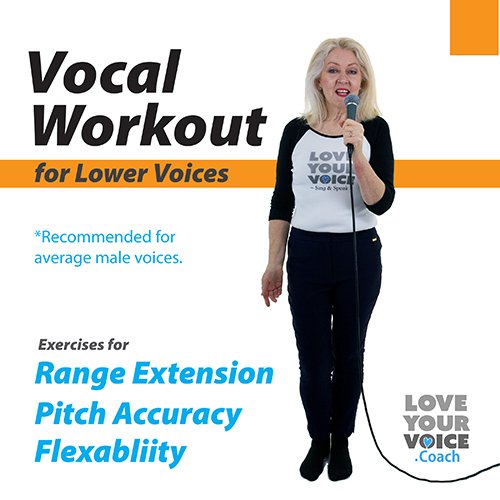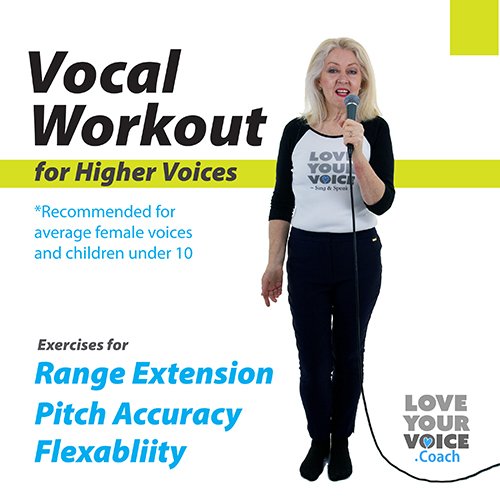How to Deliver Your Message Like a Pro
If you speak for a living - whether you’re a teacher, therapist, motivational speaker, or podcaster - you’ve likely spent hundreds of hours studying and then editing your content, to ensure what you say is as engaging and informative as possible.
Great content is only half the battle, however. Your delivery can be a greater barrier to your audience retaining and engaging with what you say than the quality of the content itself.
We recently ran a masterclass on vocal delivery with 48 therapists and discovered some interesting insights from their experiences. Below, we’ll look at the common complaints people have about their own voices and others’, and how to address them.
What Does Good Delivery Sound Like?
Just as there is no one perfect standard of physical beauty, there is no one perfect, beautiful vocal tone. Our voices are as diverse as we are - that’s part of what makes them so amazing! Listeners enjoy voices ranging in tone from crystal clear to husky; the key is that they sound expressive and conversational without being harsh.
Expressiveness comes from varying your speed, pitch, and taking appropriate pauses. Varying pitch and speed also help your delivery sound more conversational and authentic.
What Does Poor Delivery Sound - and Feel - Like?
During Zelda’s masterclass, we asked the attendees what they disliked hearing both as listeners and as speakers. There was a lot of overlap between the two!
Listeners found these tonal qualities difficult to listen to:
Tired, flat tone
Hoarseness, excessive raspiness, or scratchiness
Squeaky or childlike voices
Screechiness or harshness (i.e.: a drill sergeant or that person you can hear all the way across a crowded restaurant whether you want to or not)
Repeated mispronunciations or heavy accents that make it difficult to understand the speaker
Clicks and other mouth noises
Excessively loud breaths before words or sentences.
It’s interesting to note that many of the things listeners found irritating or distracting - harshness in the form of screechiness or resonance, mouth clicks, and loud breaths - tend to be exacerbated by amplification. If your professional speaking event involves a microphone, you may want to address these issues even if they’re not problems that come up in normal conversation.
Speakers noticed these issues with their own speaking:
Sore throat or losing their voice from overuse
Over enunciation or sounding too formal
Mumbling or under enunciation
Stumbling over words and getting tongue-tied
“Small” childlike tone that doesn’t command authority (one participant said she sounded like Minnie Mouse)
Dry mouth
While at first glance these lists might look fairly different, they have a lot in common. What the listener hears as hoarseness the speaker experiences as a sore, tired throat. Clicks and mouth noises are actually a result of the dry mouth our speakers complained about.
How to Improve Your Delivery
Basic Vocal Hygiene for Speakers
The first step to addressing any issue with your delivery is making sure you’re practicing good vocal hygiene. Your voice is a sensitive instrument that needs proper maintenance. Speech is produced by the vibrations of delicate mucus membranes and movement of tiny muscles that can become strained or irritated by overuse or bad habits.
Like an athlete warming up before a game, warming up your voice ensures those tiny muscles that help you to vocalize are ready for action, allowing you to speak longer with less strain. Making warmups part of your daily routine is great for any professional speaker, especially if you struggle with hoarseness, tiredness, or a sore throat after speaking.
Your lifestyle choices, especially those around diet and hydration, also have an outsized impact on your vocal delivery. Raspiness, tiredness, and mouth clicks (a.k.a.: dry mouth) all stem from lack of hydration. Drinking plenty of water is essential, but avoiding dehydrating fluids and foods like alcohol, caffeine, and citrus prior to a speaking engagement is equally important. Habits like smoking and vaping or even just spending time in smoky environments can also dry out and irritate your throat. Certain foods that trigger inflammation or acid reflux add to or even cause hoarseness.
The ENT of Georgia website offers a great list of recommended (and not-recommended) foods, but remember that every body is different and foods that irritate your voice might differ from those on the list.
Rest is another crucial part of any speaker’s vocal health routine, particularly if you find your voice sounds or feels tired. Even if you warm up and hydrate, your body still needs time to recover from strenuous activity. Taking time to be silent, especially after you’ve spent a lot of time talking allows time for inflammation to dissipate and tired muscles to heal.
Even seasoned vocal pros can feel the impact of skipping these basic best-practices. Zelda had to record a twenty-page script the Monday after a weekend of birthday revelry, complete with drinks and long conversations in loud spaces that required a raising her voice to be heard. Despite drinking plenty of fluids and warming up, the engineer still had to stop the recording multiple times because the mic was picking up too many mouth clicks.
Tired and Flat Voices
There’s more you can do for a tired voice than just resting. Vocal rejuvenation exercises can help relieve strain and reduce tension. You can download a PDF of Love Your Voice’s Vocal Rejuvenator exercise here. Rejuvenation exercises can also help raspy or scratchy voices.
Mumbling and Getting Tongue-Tied
Everyone get’s tongue-tied now and again, especially if you’re speaking for a long time. Working on tongue and articulation exercises with a vocal coach can help improve the clarity of your speech and reduce the how often you stumble over your words.
Speaking too quickly and too quietly are often the root cause of mumbling and stumbling. Speaking slowly takes practice; it’s natural to think we’re speaking slower than we actually are, especially if we’re feeling any anxiety or stage fright. If you’re not certain how fast you’re speaking, it’s a good idea to record and listen back to your practice sessions. Speaking louder also takes practice. It can be very difficult to tell how loud we are without feedback from the person we’re speaking with. Practice increasing and decreasing the volume of your voice as you speak.
Over-Enunciation and Sounding Too Formal
Similar to mumbling, tongue exercises can help reduce over enunciation. Relaxation exercises, both to relax your jaw and your mind, can help with this issue. For some speakers, formality is an anxiety response; relaxing may allow you to speak more conversationally.
High-Pitched or Small Voice
Having a high or childlike voice can make it hard to command the attention of a crowd. Warming up before you speak makes it easier to consciously lower the pitch of your voice without straining. Once you’re warmed up, try running exercises designed to train your voice to speak in lower pitches. Zelda uses an exercise she calls “Go Slow and Low” with her speech students.
Mispronunciations and Heavy Accents
Let’s establish this first: there is nothing wrong with having an accent, whether it’s regional or you’re speaking a second or third language. In fact, it may make your speaking even more engaging. But if your accent is making your speech difficult to understand or you repeatedly mispronounce words, it can get in the way of good vocal delivery.
Similar to mumbling, tongue exercises and practicing speaking slowly can help make your speech easier to understand and give you time to catch yourself before you misspeak. While speaking slowly, pay attention to which parts of words, also called phonemes, are tripping you up; for example, you might struggle with “th” sounds or a particular vowel. Many languages have unique phonemes and it takes active effort to learn how to form them as an adult. Practice saying difficult sounds correctly to teach your muscles and brain how to form the correct phoneme. Then, put them back into the context of the sentence or word you were struggling with.
We’ve seen these techniques work in the real world. A while back, Zelda took on an Accent Reduction client who found his heavy Chinese accent was impacting his presentations at his high level corporate job in the United States. The client struggled to pronounce a number of words - including his job title - due to the differences between the Chinese phonemes he learned as a child and the completely different English sounds he was now learning as an adult in his fifties. By practicing simple tongue and articulation exercises daily, he was able to quickly master the sounds he swore were impossible to pronounce when he began working with a speech coach.
Noisy Breaths Between Words or Sentences
Noisy breaths are a common complaint from listeners and can be especially distracting if you’re speaking into a microphone, whether to record your speech or amplify your voice for a large audience. Active breathing is a common cause of loud inhalation - and is often less effective than passive breathing. Active breathing relies on the muscles in your ribs, chest, and abdomen to force air into your lungs. Passive breathing relies on your diaphragm and intercostal muscles to draw air into your lungs and is generally quieter.
Learning to use passive breathing, also called reverse or backwards breathing, is easier than it sounds. The see passive breathing in action, check out Zelda’s video with singer-songwriter TJ Carter, where they use passive breathing to get quick, quiet catch breaths in a difficult song.
Harsh or Screechy Vocal Tone
If you need to speak loudly for a living, whether you’re a drill sergeant or a classroom teacher, you may have developed a harsh or screechy tone in order to be heard over a noisy environment. While it might make you easier to hear, it doesn’t necessarily make for a pleasant listening experience.
It’s possible to speak loudly without relying on a harsh tone. As with any professional speaking or singing, warming up, especially with gentle humming exercises, will help you get the volume you need without pushing. Just as in singing, good breath support is the key to good speaking volume with a pleasant tone. A good vocal coach can help you find the right breathing exercises for you and train you to soften your vocal tone by adding more breath or air to your voice.
If you find that you’re needing to use a harsh tone or raise your voice in order to be heard, it’s worth looking into either amplifying your voice or reducing the noise in your environment. You can only speak so loudly for so long, after all. If you’re already using a microphone, make sure you’re using the mic correctly so that it’s picking up your speech without shouting. If you’re still raising your voice because you can’t hear yourself, consider adding monitoring to your amplification set up by either using a headset or setting up speakers pointed towards you in addition to those facing your audience.
Why Delivery Matters
Good delivery is about more than having a beautiful sounding voice. You want to make a positive impression on your audience, whether that’s one client in a therapy session or a crowded auditorium. More importantly, you want them to understand what you’re saying. The delivery issues discussed in this article aren’t just distracting your listeners, they can impact the intelligibility of your speech.
Knowing that your delivery is enjoyable for your listeners can also impact on your confidence as a speaker. It’s a lot easier to focus on what you’re saying when you’re not worried about how you sound saying it. Public speaking can be a major source of anxiety, even for professionals; trusting that your voice sounds great gives you one less thing to worry about when you take the mic or the platform.
On top of this, good delivery is closely tied to good vocal health. Many of the common complaints both listeners and speakers have about their voices - hoarse, raspy, or screechy - are signs that their voice is in need of some TLC. Even if you’re not worried about the sonic quality of your voice, making sure your delivery is the best it can possibly be will help you speak professionally with less discomfort for years to come.
Schedule a Lesson Today and Take Your Delivery to the Next Level
We hope this helps you speak with your best, healthiest voice! Having a “pleasant” voice isn’t some inborn trait. Delivering your message in a powerful, beautiful voice is a skill just like the many others you’ve developed on your journey to becoming a professional voice user. Developing the most beautiful version of your voice is easier and faster with a holistic vocal coach. A good coach will address both vocal training and lifestyle choices that might be affecting your vocal quality. If you want to learn with a vocal coach, reach out to Zelda for a free discovery session. Speak well and love your voice!
Get in touch to set up a lesson with Zelda and take your delivery to the next level!
Mention this article for a 20% discount on your first lesson.
Resources
Check out our range of vocal resources below. Click the image to go our record store.




